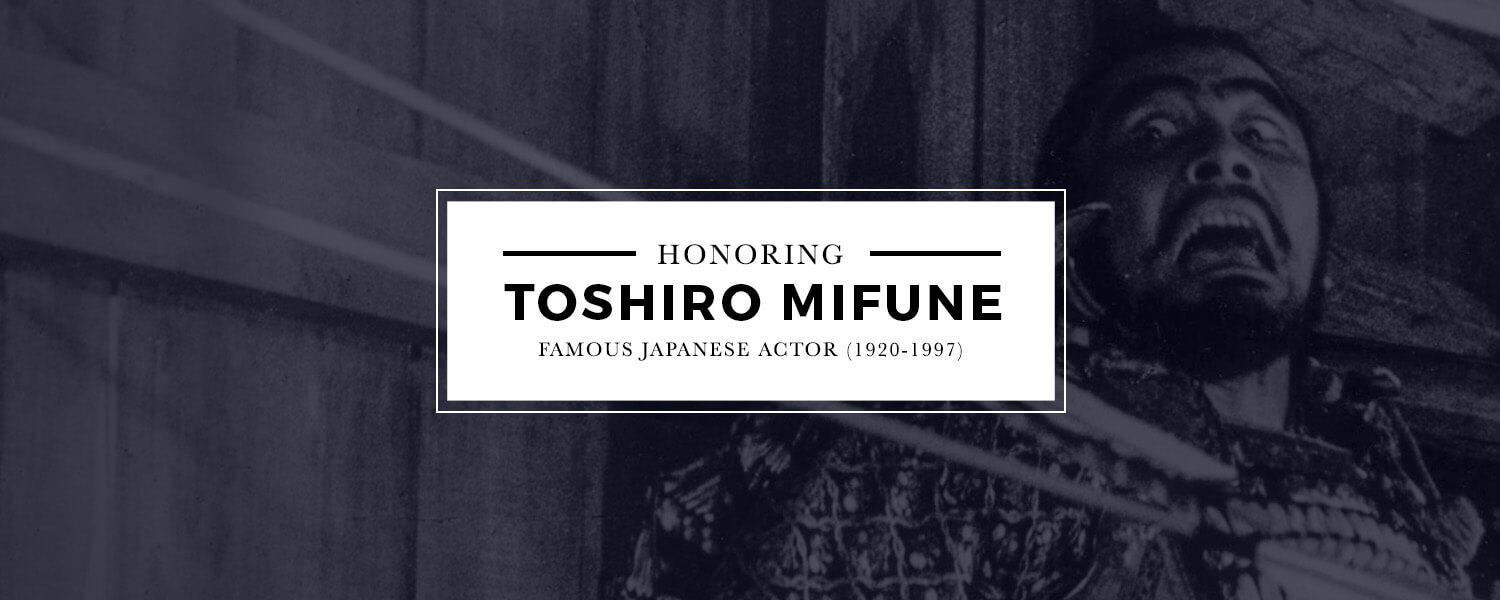There is no actor more recognizable in Japanese cinema than Toshiro Mifune. Fans of classic Japanese movies, such as Akira Kurosawa’s, would know his name and face. Mifune has been credited as the actor who breaks the mold of the reserved and proper samurai. Instead, he is gruff, a wild card, unpredictable, emotional and expressive, all while maintaining the dignity and poise of what a samurai can be on the wide screen. In honoring the legendary actor, let’s get to know more about him, shall we?
History
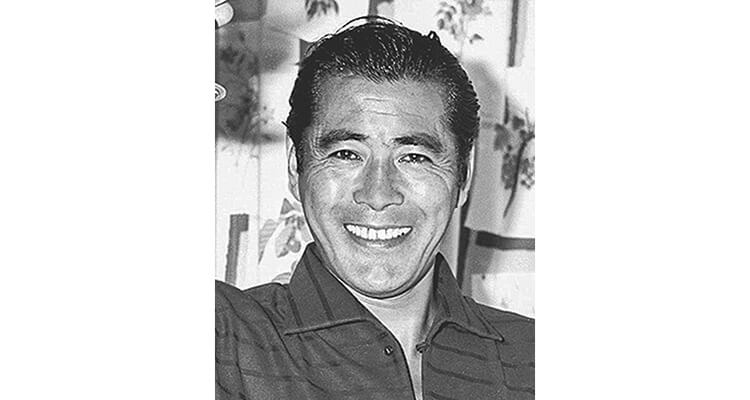
Toshiro Mifune (三船 敏郎, Mifune Toshirou) was born April 1920 in Qingdao, China. He was the oldest of three children, and grew up helping his Japanese Christian missionary parents. As his father ran a photography shop, Mifune was exposed (=p) to the craft and became interested in pursuing photography as a career. After nineteen years in China, Mifune went to Japan and applied for the Japanese army, where he served as an Aerial Photographer during World War II.
After the war ended, Mifune went to Toho looking for work as a cameraman. Instead, his friends secretly submitted his resume for an acting audition. Fortunately, he got an audition for a new talent search in Toho. An actress named Takamine Hideko alerted Akira Kurosawa to Mifune and Kurosawa soon became transfixed with this “diamond in the rough.”
In 1947, Toshiro Mifune starred in Snow Trail (銀嶺の果て, Ginrei no Hate) as one of the main characters, a bank robber. Mifune slowly gained success in acting and became an international face in Akira Kurosawa’s 1950 movie, Rashomon. The movie did well commercially in Japan, but critics did not like it. However, audiences and reviewers abroad loved the film. Rashomon is now considered to be one of the best movies ever made.
In the decades following, Mifune enjoyed lasting success in the film industry. Akira Kurosawa created many masterpieces with Mifune as the lead. Alas, they parted ways after making Red Beard (赤ひげ, Akahige). Despite that, Toshiro Mifune’s acting career remained strong, playing different roles up till 1995.
With a series of problems that some people attribute to his heavy drinking lifestyle and work stress, Mifune’s health started to decline in the early 1990s. Sachiko Yoshimine, his ex-wife, started taking care of him during this time. Unfortunately, Yoshimine succumbed to pancreatic cancer in 1995, and Mifune passed away due to multiple organ failures in December 1997.
Toshiro Mifune’s impact on the film industry
Mifune’s partnership with Kurosawa created ripples in the film industry as a whole. It is hard to separate both persons since their partnership in films is still very influential. Seven Samurai (七人の侍, Shichinin no Samurai) inspired Hollywood to make The Magnificent Seven. It also influenced films such as the upcoming Justice League film by Zack Snyder, A Bug’s Life by Pixar, and probably other lesser-known ones.
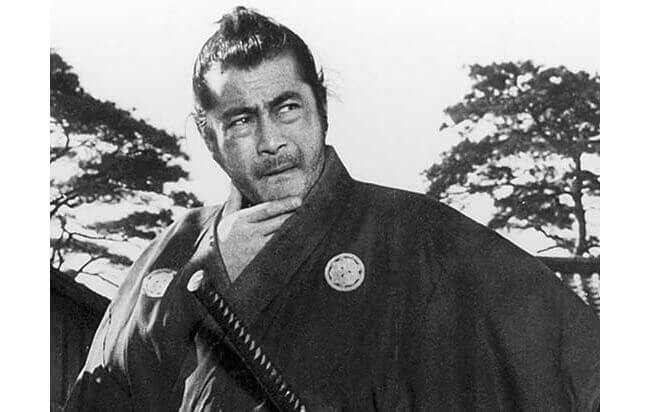
Yojimbo, both the movie and the nameless ronin played by Mifune, was adapted into a classic western, A Fistful of Dollars, directed by Sergio Leone and starring Clint Eastwood. A trivia for JoJo’s Bizarre Adventure fans: Jotaro Kujo, the star (=P) of the Stardust Crusader saga, was based on Eastwood’s performance in that movie.
Star Wars fans would probably know the inspiration for George Lucas’ epic space opera. Yes, Kurosawa’s The Hidden Fortress (隠し砦の三悪人, Kakushi toride no san akunin) inspired one of the biggest geek franchises in the world. The Hidden Fortress employed the filmmaking approach by experiencing the story from the point of view of two side characters. Lucas took the same technique into Star Wars by following R2-D2 and C-3PO. The plot of The Hidden Fortress was modified for different Star Wars movies, namely Episode I, II, and IV. Mifune’s character, the fallen general Rokurouta Makabe, inspired the wise and protective Obi-Wan Kenobi. Lucas himself confirmed that he offered the role of Obi-Wan to Mifune, though Mifune turned it down. Both Leia and Padme Amidala share similar roles to Princess Yuki, while samurai armor designs had heavily influenced the look of Darth Vader.
On watching movies starring Toshiro Mifune
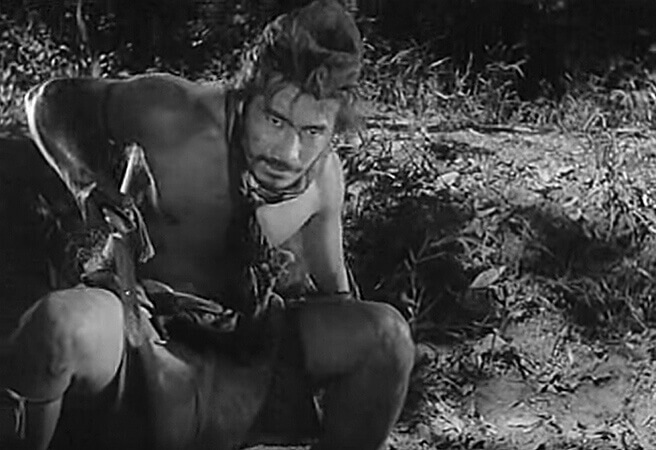
Years ago, before knowing much about Mifune and Kurosawa, I purchased an anime series named Samurai 7. That led me to learn more about the original Seven Samurai movie by Kurosawa, which in turn lead me to watch Rashomon. While watching Rashomon, Toshiro Mifune’s character, Tajoumaru the bandit, stood out the most. Mifune’s lively and unpredictable acting contributed a great deal to how memorable Tajoumaru is. His lack of proper attire helps to visually distinguish him too.
Mifune was able to act out a vast array of expressions and body language. His portrayal of Tajoumaru ranges from violent madman to a person stumbling and trembling in fear, and his dramatic actions and facial contortions are alive on the screen. Not to mention his seemingly endless stamina seen throughout the movie.
His acting in Seven Samurai is much less violent but still over-the-top and enjoyable to watch. Though not the main character, Kikuchiyo (Mifune’s character) is the most likable. His goofiness, boldness, eagerness, and loud mouth won me over, rather than the lead character of Kanbei Shimada. The more screen time Kikuchiyo has, the more entertaining the movie is. Mifune/Kikuchiyo’s excitement for battle looks like a kid’s joy in opening a present. His bravado has an endearing effect on me. As such, Kikuchiyo’s tender moments are elevated because of the contrast.
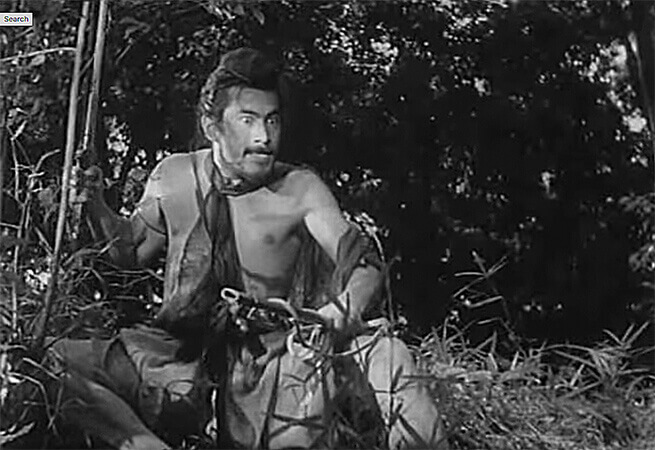
Though it might be easy to say that Mifune was typecast, he was a breath of fresh air. In the post-World War II Japan, few dared to adventure beyond the conventional. He excelled at alternating between extreme physical feats and being very mindful of his emotions. Rashomon, in my opinion, shows the breadth of Mifune’s acting chops very well.
His legacy will live on
Initially, I had wanted to write about Akira Kurosawa, but my train of thought dropped me at Toshiro Mifune Station. A quick search revealed that Mifune received his own Hollywood Walk of Fame Star in November 2016, while another bit of news informed me about a documentary on the actor. Mifune: The Last Samurai is the brainchild of award-winning director Steven Okazaki. In the documentary, Okazaki interviewed many people who were influenced by Mifune. It features interviews with Steven Spielberg, Mifune’s remaining family members, Martin Scorsese, and more. On top of that, Keanu Reeves provided narration for the film. You can watch the trailer for it below.
There is much that we still do not know about Mifune, and it seems the documentary is a great start. It is amazing how both Kurosawa and Mifune ended up finding each other. The world of cinema would be so much different if they had not met.

Featured Sponsor - JAST
The sweetest romance and the darkest corruption, the biggest titles and the indie darlings; for visual novels and eroge, there's nowhere better.
Big thank you to our supporters
From their continous support, we are able to pay our team for their time and hard work on the site.
We have a Thank-You page dedicated to those who help us continue the work that we’ve been doing.
See our thank you page